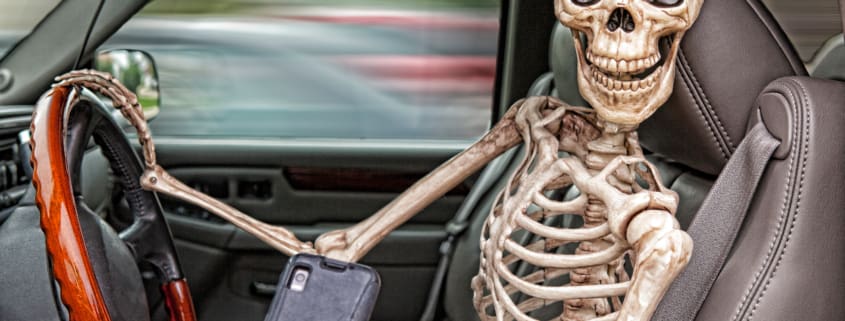New distracted bill is overdue, will save lives and make Ohio roads safer for all
Betras, Kopp & Markota has long been a leader in the battle to end the carnage caused by distracted driving. That is why we are pleased to commend the members of the Ohio General Assembly for passing and Governor Mike DeWine for signing SB 288, which includes provisions that will significantly strengthen the penalties for using, holding, or physically supporting an electronic wireless communications device (EWCD)–yes that’s the new fancy acronym for “cell phone”–while operating a motor vehicle.
The new law makes using an EWCD while behind the wheel a primary offense. That means a law enforcement officer has the right to pull over and ticket any driver seen using, holding or physically supporting a cellphone. Officers may also follow vehicles that are swerving or drifting from lane to lane to determine if the driver is using an EWCD. Until now, texting while driving was a secondary offense which meant drivers could not be stopped just for using a cell phone unless they were under the age of 18.
Governor DeWine has been imploring members of the legislature to enact the law since it was introduced in 2021. “You’ll never have a chance to vote on a thing that is as clear-cut that you will be saving lives as when you vote ‘yes’ on it.”
During the signing ceremony for SB 288 DeWine said “Right now, too many people are willing to risk their lives while behind the wheel to get a look at their phones. My hope is that this legislation will prompt a cultural shift around distracted driving that normalizes the fact that distracted driving is dangerous, irresponsible, and just as deadly as driving drunk.”
We share that hope because since 2017 people using EWCDs while driving in Ohio were involved in 73,945 accidents including the 31 fatal crashes and 258 that resulted in serious injuries in 2022 alone. The real tragedy: each and every one of those collisions was 100% preventable.
Here is what you need to know about the new law:
It goes into effect on Monday, April 2, 2023. For the first six months officers may only issue written warnings for violations.
As noted above, the law prohibits drivers from operating a motor vehicle, trackless trolley, or streetcar on any street, highway, or property open to the public for vehicular traffic while using holding, or physically supporting with any part of the person’s body an electronic wireless communications device. In essence this means drivers may not input information or type on a screen while driving.
There are a number of commonsense exceptions written into the law. Drivers may:
Call 911 or contact a health care provider or hospital in case of emergency;
Use a EWCD while parked outside a lane of travel or stopped at a red light or on a road or highway that has been closed due to an emergency situation;
Hold a device up to their ear during a call or use a speakerphone;
Use a navigation service as long as the driver is not inputting destinations or information;
Begin or end a call with a single swipe of the screen;
Store a device in a holster, holder, harness, or article of clothing.
Violations carry an escalating series of fines:
Up to $150 and two points on your license for the first offense.
Up to $250 and three points on your license for a second offense within two years.
Up to $500, four points on your license and a 90-day driver’s license suspension for a third offense within two years.
We hope none of you ever has to pay a fine because that means the law is working and you are not putting yourself, your passengers, other drivers, and pedestrians at risk by driving while distracted.
And just in case you’ve forgotten why we care so much about this issue and fight so hard to end the preventable carnage caused by distracting driving, we urge you to view this video: https://youtu.be/Uc7nviub_Tk


 Just in case you haven’t looked outside yet, our “Three Ps” of safe winter driving tips will be extremely relevant and useful over the next couple of days.
Just in case you haven’t looked outside yet, our “Three Ps” of safe winter driving tips will be extremely relevant and useful over the next couple of days.